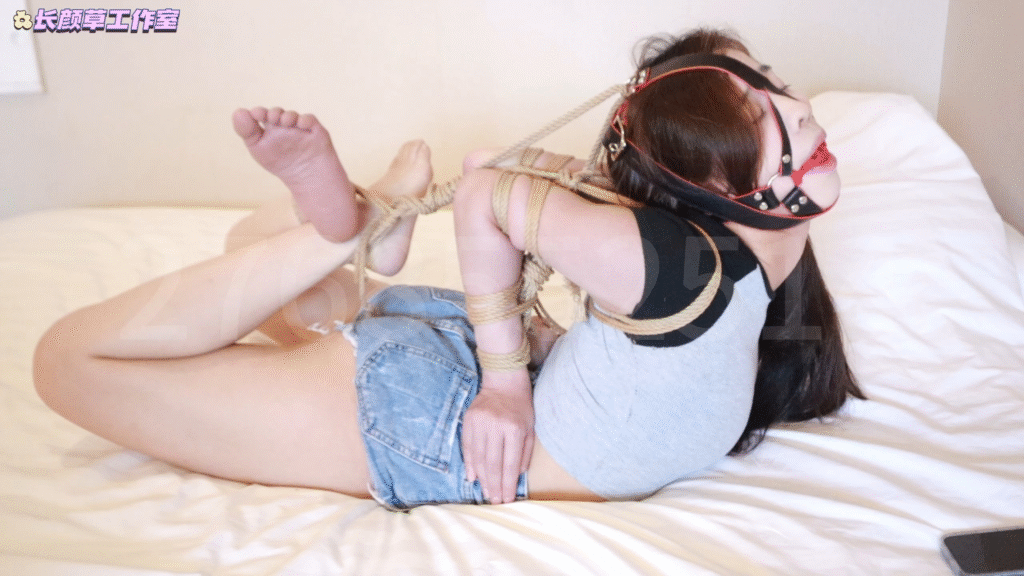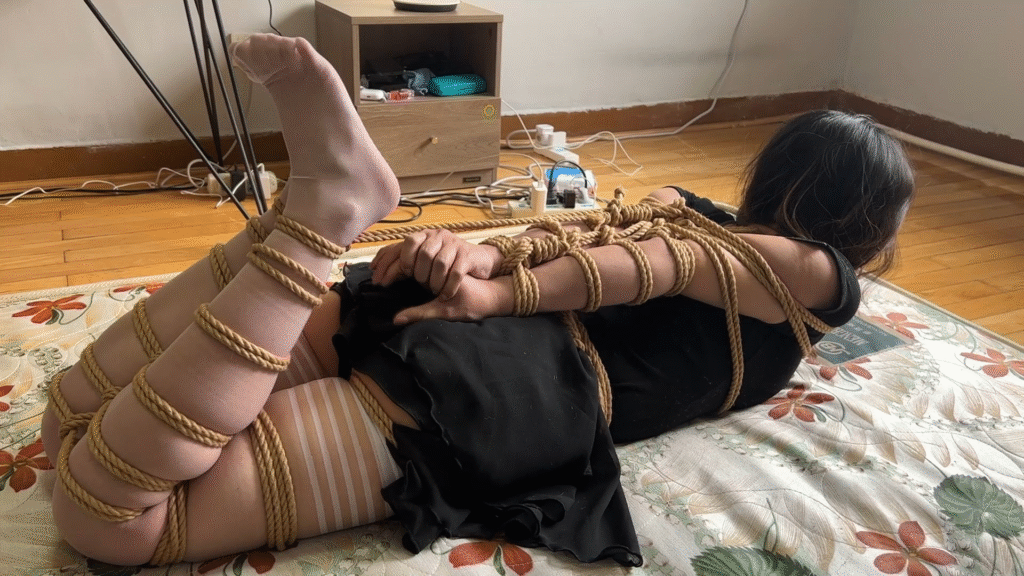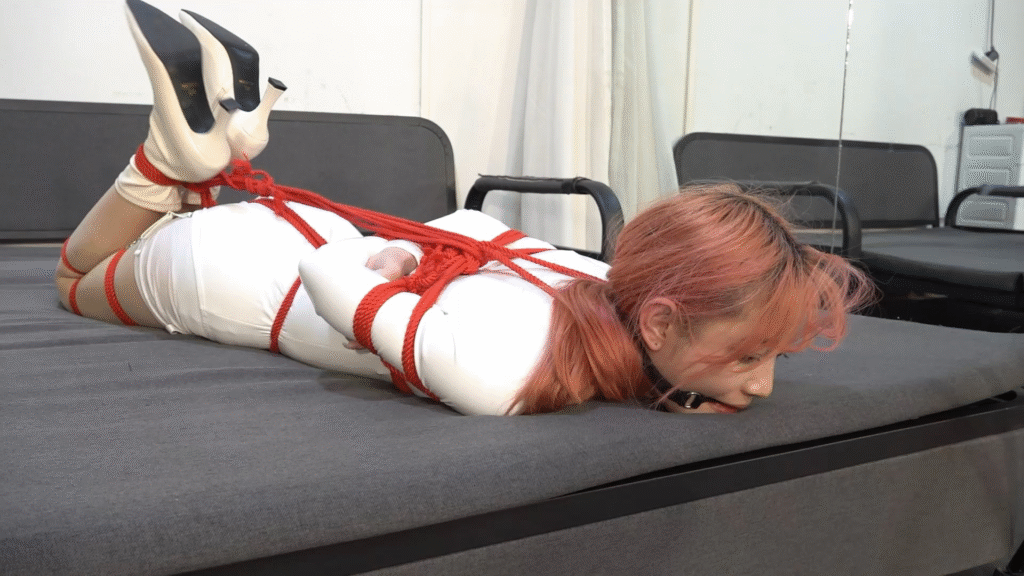
For many people in the rope bondage community, the hogtie is one of the most intense and memorable positions they’ve ever experienced. It’s more than just wrists and ankles bound behind the back — it’s a state of complete physical restraint, an emotional journey, and, for some, a deeply meditative headspace.
To understand why hogties have such a strong appeal, we spoke to rope lovers in Singapore and beyond, collecting personal accounts from both those who tie and those who are tied. These stories offer an unfiltered look at what it really feels like to be hogtied.
The Physical Sensation

The hogtie is a demanding position. With wrists bound behind the back and ankles pulled toward them — sometimes connected tightly, sometimes with more slack — the body’s natural flexibility is challenged.
“Within the first few minutes, I’m aware of every muscle in my shoulders,” says L, a rope model based in Singapore. “My breathing changes because my chest can’t expand as much. The ropes bite into my wrists and ankles, and there’s this constant reminder that I’m not going anywhere.”
Others describe a growing warmth where the ropes press against the skin, sometimes moving from mild discomfort into a pleasant burn. In tighter hogties, the position can limit circulation, making limbs feel heavy or tingly. The key, they all stress, is that this intensity is managed within a safe, consensual framework.
Emotional Impact and Headspace

Being hogtied often shifts a person’s mental state. Many bottoms speak of entering “subspace” — a calm, almost floaty mindset where the outside world fades away.
“I stop thinking about anything except the rope,” says J, who has been in the local rope scene for over three years. “There’s no phone, no deadlines, no noise. It’s just me, my body, and the feeling of being held completely still.”
For some, hogties amplify feelings of vulnerability and surrender. “The first time I was hogtied, I felt exposed and a little scared,” shares S, a beginner from Singapore. “But my rigger talked me through it, kept checking in, and soon that fear shifted into trust. It’s a rare feeling — being able to let go like that.”
Stories From the Rope Floor

The Silent Hogtie
R, an experienced rigger, recalls a scene with a partner who wanted to explore sensory deprivation alongside restraint. “We tied her in a classic hogtie, then added a blindfold and noise-cancelling headphones. Within minutes, she was motionless except for her breathing. Afterwards, she said it felt like she was floating in darkness, completely safe but completely powerless.”
The Long-Duration Hogtie
E, a visiting rope enthusiast from Japan, describes a hogtie that lasted nearly 45 minutes. “It was strict but not painful. By the halfway point, I felt like my body didn’t belong to me anymore — the ropes were part of me. When he finally untied me, the release was overwhelming, almost emotional.”
The Playful Hogtie
Not all hogties are intense or heavy in tone. K, a Singapore-based couple, enjoys playful rope scenes. “We do a loose hogtie on the bed, tease each other, maybe add tickling or light spanking. It’s more about fun than endurance. Rope doesn’t have to be serious to be satisfying.”
Variations That Change the Experience

Hogties aren’t one-size-fits-all. Adjustments in technique can completely alter how the position feels:
- Loose vs. Tight: A looser hogtie allows some movement, making it less physically taxing. Tight hogties limit motion and intensify the strain.
- Suspended Hogtie: Adding suspension changes body weight distribution and can increase the intensity dramatically.
- Harness Hogtie: Incorporating a chest or hip harness spreads rope tension, often making longer scenes more sustainable.
- Prop-Enhanced Hogtie: Using furniture, bed frames, or floor anchors changes posture and pressure points.
Safety and Aftercare

Every person interviewed stressed one point above all: hogties can be dangerous if done without care. Key safety considerations include:
- Nerve Safety: Avoid rope placement that compresses major nerves, especially in the arms and wrists.
- Circulation Checks: Watch for numbness, tingling, or colour change in extremities.
- Communication: Have clear signals for “pause” and “stop” that work even if the bottom is gagged.
- Emergency Tools: Keep a rope cutter or safety shears within reach.
Aftercare is equally important. “When the ropes come off, my body feels light but shaky,” says L. “I need warmth, water, and a bit of time to come back. Aftercare isn’t just for the bottom — it’s for the top too.”
Why People Keep Coming Back to the Hogtie

The recurring theme in every story is that the hogtie offers something uniquely potent: a blend of physical restriction, psychological surrender, and sensory immersion. For some, it’s a way to challenge endurance; for others, it’s a shortcut to deep emotional connection.
“Every hogtie is different,” says J. “The mood, the trust, the rope tension — it all changes the experience. That’s what keeps it exciting. You never quite know where it’s going to take you.”
Join our free lifetime membership to access free lifetime bondage content, advanced tutorials, and real rope experiences from Singapore’s kink community.



